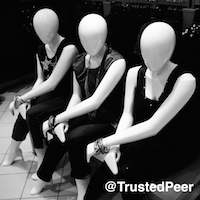Every business seeks new revenue, and extensions of a product line are a good bet for driving it. However, as I mentioned in 'Sequel Products: When Are They a Good Idea?,' extensions are only a good idea in specific circumstances. So, what can you do if your product does not meet any of the criteria for being extended? When a sequel product is not advisable, a brand reinvention may be the right step.
What is the difference between the two?

- A line extension is when a new product is added to an existing brand portfolio without changing the brand identity. For example, a hockey team can sell a new style or size of fan jersey. This gives fans a reason to buy something new from the team, without changing the team's name, colors, roster or brand identity.
- A brand reinvention, on the other hand, is when an existing brand is redefined. This entails altering what consumers think the brand delivers for them. To achieve this, a hockey team would likely change names, trade players, movie cities, or change player behavior – to alter their image in the eyes of fans.
You may wonder why a brand would go through the work of reinventing itself, when they could make the potentially simpler move of producing new offerings under existing branding. After all, building a brand requires significant investments of time and money.
The answer is found in the product life cycle. If a brand is on the decline, management may not agree to fund a line extension. After all, a declining product may indicate a value proposition with decreasing relevance or a target audience with decreasing purchasing power.
- You retain the consumer name recognition you worked so hard to build with the original product. Over time, in a successful reinvention, this name comes to mean something different from what it did initially, without having to start from scratch.
- You keep the value of the brand name among retailers or distributors. Using the name that they associate with a trusted supplier helps with distribution for your new offering.

What does a successful brand reinvention look like? One example comes from Banana Republic®. This brand was originally a travel-oriented store, supplying books about voyages and excess military clothing store. However, they redefined the brand to be a high-end casual clothing store, allowing them to target a more affluent audience. Though the original store might have conjured the feeling of walking into a safari, the new store experience is more about clean lines and elegance.
If a line extension is not the right move for your brand, consider whether a brand reinvention would be worthwhile. If you have a mature brand with strong name recognition, but a declining product, you could be a good candidate.
If you need consulting on Product Life Cycle Management, contact TrustedPeer Expert Ted Judson.


Comments
Login to leave comments